Do you have a question about the Arctic Cat 300 and is the answer not in the manual?
Explains risks like collisions, rollovers, and the importance of precautions.
Explains the meaning of symbols like Warning, Caution, and Note in the manual.
Information on genuine Arctic Cat parts and accessories for your ATV.
Guidelines for appropriate ATV size based on operator age and speed limitations.
Emphasizes that ATVs are not toys and can be hazardous if not operated properly.
Key safety practices, including reading the manual, proper instruction, and age recommendations.
Contact details for ATV safety information and training courses in the U.S. and Canada.
Information on important safety hangtags and labels attached to the ATV.
Detailed explanations and locations of various warning labels on the ATV.
Hazards of operating without instruction and allowing underage operators.
Risks associated with carrying passengers and operating on public roads.
Hazards of riding on pavement and operating without proper safety gear.
Dangers of operating on steep hills and potential for overturns.
Risks from consuming alcohol/drugs, excessive speed, and performing stunts.
Consequences of failing to inspect and properly maintain the ATV.
Risks of improper body positioning and handling unfamiliar or rough terrain.
Hazards related to improper turning and loss of control.
Dangers of improper techniques for climbing and descending hills.
Risks of turning on hills and procedures for stalling/dismounting.
Risks of improperly operating over obstacles and potential for overturn.
Hazards of skidding, operating in water, and improper reverse use.
Risks from ATV modifications and improper tire pressure.
Hazards of overloading the ATV or towing improperly.
Danger of operating the ATV with the brake lever lock engaged.
Importance of wearing appropriate protective clothing and gear for ATV riding.
Details on selecting proper boots, eye protection, and protective clothing.
Essential pre-ride checks for tires, controls, brakes, throttle, and other components.
Checks for lights, electrical systems, oil, fuel, chassis, and drive train.
Recommended tools and items for first aid and survival during rides.
Importance of carrying water, identification, maps, and emergency kits.
Explains how body weight, balance, and forces affect ATV handling.
Importance of considering environment, weather, terrain, and night riding safety.
Guidance on trail riding, visibility, and understanding trail signs.
Considerations for riding with others and interacting with hikers, animals, and other vehicles.
Guidelines on ATV load capacity, weight distribution, and speed considerations.
Dangers of consuming alcohol or drugs before or during ATV operation.
Importance of riding within limits and adhering to laws and regulations.
Advice on group riding dynamics, peer pressure, and managing risks.
Emphasizes owner's responsibility for supervising all ATV riders, especially inexperienced ones.
Recommendations for age-appropriate ATV operation and speed limitations.
Technical details and specifications for the Arctic Cat ATV model.
Diagrams and a list identifying key parts and controls on the ATV.
Essential skills for operating the ATV, including mounting, starting, and parking.
Step-by-step procedures for starting the engine, including cold engine conditions.
Proper procedures for shifting gears and applying brakes for safe stopping.
Steps for parking, dismounting, and active riding techniques like weight shifting.
Detailed explanation of body positioning for turns and maintaining balance.
Instructions for executing wide and sharp turns safely by adjusting body weight.
Procedures for K-turns when stalling uphill and safe uphill riding techniques.
Techniques for riding downhill safely and advanced sidehilling maneuvers.
Methods for swerving to avoid obstacles and crossing them safely.
Advice on reversing safely and controlling skids on various surfaces.
Guidance on parking on hills and procedures for handling stalls.
Safety precautions for crossing water and roads with the ATV.
Procedures for safely stopping the ATV and shutting off the engine.
Identification and function of key controls like ignition, brakes, and shift lever.
Explanation of emergency stop, starter button, reverse override, and dashboard indicators.
Information on the speedometer, LCD display functions, and clock settings.
How to operate the choke, throttle lever, and fuel valve for engine management.
Adjustment of the throttle limiter and operation of the fuel valve positions.
Procedures for draining the carburetor float bowl and operating the seat latch.
Checking oil levels and the purpose of the safety flag bracket.
Guidelines for loading racks and safe trailering and towing practices.
Procedures and precautions for transporting the ATV on a trailer or vehicle.
Safe procedures for filling the ATV gas tank, including ventilation and no smoking.
Specifications for recommended gasoline and engine oil, including cautions.
Recommendations for transmission lubricant and the engine break-in period.
Procedure to properly burnish brake pads for optimal braking effectiveness.
Schedule for performing regular maintenance tasks and checks on the ATV.
Instructions for cleaning the radiator and maintaining the coolant level.
How to inspect shock absorbers for leaks, cracks, or damage.
Lubricating cables and changing engine oil and cleaning the oil screen.
Procedures for changing transmission and rear drive lubricants.
Importance of inspecting the hydraulic brake system before each use.
Checking brake fluid levels and inspecting brake hoses for damage.
Inspecting brake pads and ensuring the brake lever lock functions correctly.
Maintenance for gas/vent hoses and inspection of protective rubber boots.
Inspecting ball joint and tie rod boots for damage and checking for play.
Procedures for cleaning and charging the ATV battery, including using a charger.
Detailed steps and safety precautions for connecting jumper cables for jump-starting.
Steps for starting the engine during a jump-start and safely disconnecting cables.
How to inspect, replace, and gap the spark plug for proper ignition.
Adjusting the throttle cable and maintaining the air filter in the V-belt housing.
Step-by-step instructions for removing, cleaning, and oiling the engine air filter.
Checking and draining the air filter housing drain tube for fuel or oil accumulation.
Importance of tire tread condition, replacement, and tubeless tire repair.
Instructions for replacing headlights and taillight/brakelight bulbs.
Lists parts excluded from warranty and conditions that void the warranty.
Details warranty rights, obligations, and coverage for emission control systems.
Owner's duties for maintaining the emission control system for warranty validity.
Explains U.S. EPA emission control warranty period, components, and owner responsibilities.
Locating and recording the key, VIN, and Engine Serial Number for reference.
Explains risks like collisions, rollovers, and the importance of precautions.
Explains the meaning of symbols like Warning, Caution, and Note in the manual.
Information on genuine Arctic Cat parts and accessories for your ATV.
Guidelines for appropriate ATV size based on operator age and speed limitations.
Emphasizes that ATVs are not toys and can be hazardous if not operated properly.
Key safety practices, including reading the manual, proper instruction, and age recommendations.
Contact details for ATV safety information and training courses in the U.S. and Canada.
Information on important safety hangtags and labels attached to the ATV.
Detailed explanations and locations of various warning labels on the ATV.
Hazards of operating without instruction and allowing underage operators.
Risks associated with carrying passengers and operating on public roads.
Hazards of riding on pavement and operating without proper safety gear.
Dangers of operating on steep hills and potential for overturns.
Risks from consuming alcohol/drugs, excessive speed, and performing stunts.
Consequences of failing to inspect and properly maintain the ATV.
Risks of improper body positioning and handling unfamiliar or rough terrain.
Hazards related to improper turning and loss of control.
Dangers of improper techniques for climbing and descending hills.
Risks of turning on hills and procedures for stalling/dismounting.
Risks of improperly operating over obstacles and potential for overturn.
Hazards of skidding, operating in water, and improper reverse use.
Risks from ATV modifications and improper tire pressure.
Hazards of overloading the ATV or towing improperly.
Danger of operating the ATV with the brake lever lock engaged.
Importance of wearing appropriate protective clothing and gear for ATV riding.
Details on selecting proper boots, eye protection, and protective clothing.
Essential pre-ride checks for tires, controls, brakes, throttle, and other components.
Checks for lights, electrical systems, oil, fuel, chassis, and drive train.
Recommended tools and items for first aid and survival during rides.
Importance of carrying water, identification, maps, and emergency kits.
Explains how body weight, balance, and forces affect ATV handling.
Importance of considering environment, weather, terrain, and night riding safety.
Guidance on trail riding, visibility, and understanding trail signs.
Considerations for riding with others and interacting with hikers, animals, and other vehicles.
Guidelines on ATV load capacity, weight distribution, and speed considerations.
Dangers of consuming alcohol or drugs before or during ATV operation.
Importance of riding within limits and adhering to laws and regulations.
Advice on group riding dynamics, peer pressure, and managing risks.
Emphasizes owner's responsibility for supervising all ATV riders, especially inexperienced ones.
Recommendations for age-appropriate ATV operation and speed limitations.
Technical details and specifications for the Arctic Cat ATV model.
Diagrams and a list identifying key parts and controls on the ATV.
Essential skills for operating the ATV, including mounting, starting, and parking.
Step-by-step procedures for starting the engine, including cold engine conditions.
Proper procedures for shifting gears and applying brakes for safe stopping.
Steps for parking, dismounting, and active riding techniques like weight shifting.
Detailed explanation of body positioning for turns and maintaining balance.
Instructions for executing wide and sharp turns safely by adjusting body weight.
Procedures for K-turns when stalling uphill and safe uphill riding techniques.
Techniques for riding downhill safely and advanced sidehilling maneuvers.
Methods for swerving to avoid obstacles and crossing them safely.
Advice on reversing safely and controlling skids on various surfaces.
Guidance on parking on hills and procedures for handling stalls.
Safety precautions for crossing water and roads with the ATV.
Procedures for safely stopping the ATV and shutting off the engine.
Identification and function of key controls like ignition, brakes, and shift lever.
Explanation of emergency stop, starter button, reverse override, and dashboard indicators.
Information on the speedometer, LCD display functions, and clock settings.
How to operate the choke, throttle lever, and fuel valve for engine management.
Adjustment of the throttle limiter and operation of the fuel valve positions.
Procedures for draining the carburetor float bowl and operating the seat latch.
Checking oil levels and the purpose of the safety flag bracket.
Guidelines for loading racks and safe trailering and towing practices.
Procedures and precautions for transporting the ATV on a trailer or vehicle.
Safe procedures for filling the ATV gas tank, including ventilation and no smoking.
Specifications for recommended gasoline and engine oil, including cautions.
Recommendations for transmission lubricant and the engine break-in period.
Procedure to properly burnish brake pads for optimal braking effectiveness.
Schedule for performing regular maintenance tasks and checks on the ATV.
Instructions for cleaning the radiator and maintaining the coolant level.
How to inspect shock absorbers for leaks, cracks, or damage.
Lubricating cables and changing engine oil and cleaning the oil screen.
Procedures for changing transmission and rear drive lubricants.
Importance of inspecting the hydraulic brake system before each use.
Checking brake fluid levels and inspecting brake hoses for damage.
Inspecting brake pads and ensuring the brake lever lock functions correctly.
Maintenance for gas/vent hoses and inspection of protective rubber boots.
Inspecting ball joint and tie rod boots for damage and checking for play.
Procedures for cleaning and charging the ATV battery, including using a charger.
Detailed steps and safety precautions for connecting jumper cables for jump-starting.
Steps for starting the engine during a jump-start and safely disconnecting cables.
How to inspect, replace, and gap the spark plug for proper ignition.
Adjusting the throttle cable and maintaining the air filter in the V-belt housing.
Step-by-step instructions for removing, cleaning, and oiling the engine air filter.
Checking and draining the air filter housing drain tube for fuel or oil accumulation.
Importance of tire tread condition, replacement, and tubeless tire repair.
Instructions for replacing headlights and taillight/brakelight bulbs.
Lists parts excluded from warranty and conditions that void the warranty.
Details warranty rights, obligations, and coverage for emission control systems.
Owner's duties for maintaining the emission control system for warranty validity.
Explains U.S. EPA emission control warranty period, components, and owner responsibilities.
Locating and recording the key, VIN, and Engine Serial Number for reference.
| Brand | Arctic Cat |
|---|---|
| Model | 300 |
| Category | Offroad Vehicle |
| Language | English |
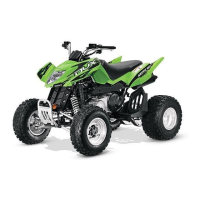
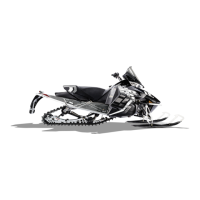
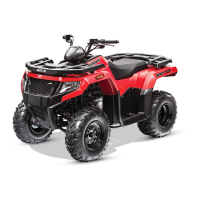
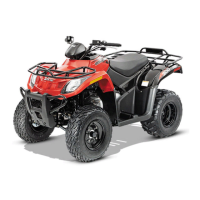
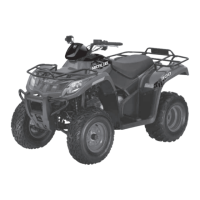
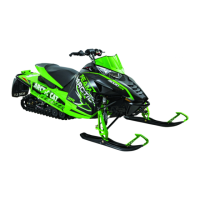

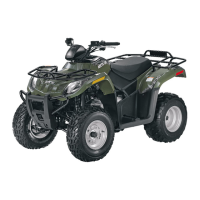

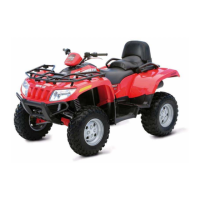
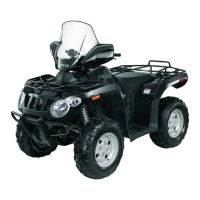

